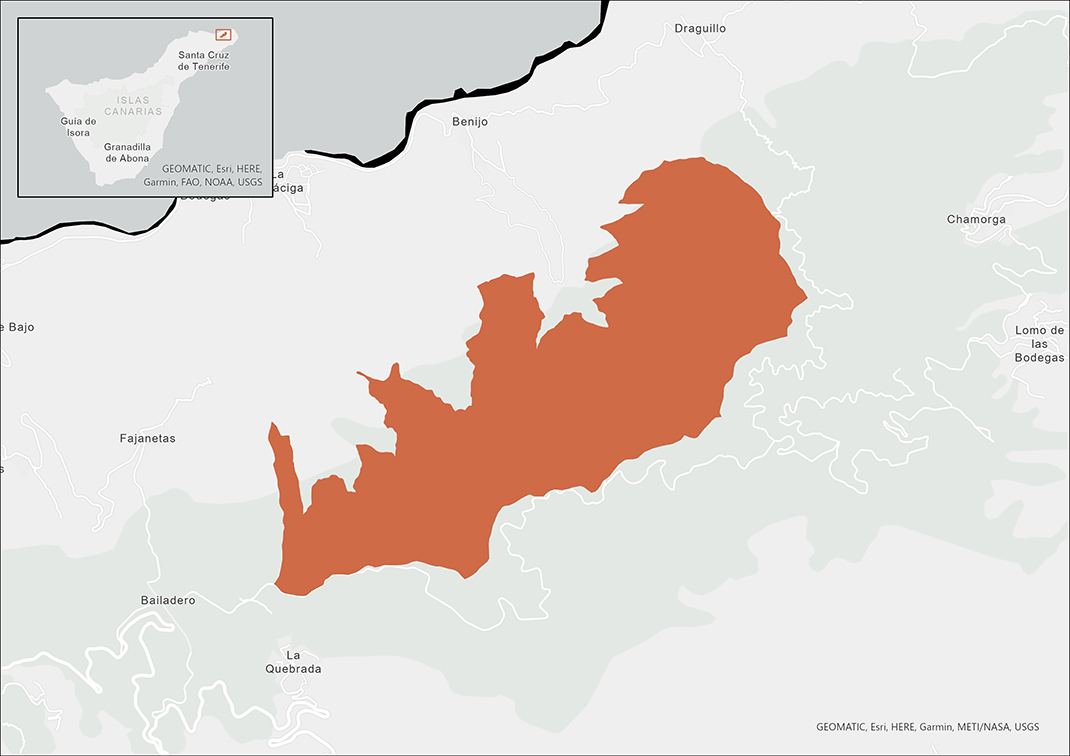Plan your next adventure
Tailor your own route along Tenerife’s trails quickly and easily..
Go to planner
El Pijaral is one of the best examples of Canarian Laurel forest in Tenerife.
The verticality of the terrain and the lack of human interaction has allowed this forest to remain in a very good state of conservation. This is why it was declared a strict nature reserve, thus limiting and controlling access so that the natural processes that place here can continue without interference.
Despite these restrictions, it is possible to visit El Pijarral if you make an advance reservation at this link.
Recommended time to visit: All year-round, with a reservation.
El Pijaral sits atop an area with a great deal of erosion and steep slopes, deep ravines and almost vertical walls.
These characteristics make it difficult to access, something which has benefitted the conservation of its natural resources.

This reserve contains extraordinary fauna, with species endemic to Macaronesia, the Canary Islands and even this specific location, making up around 40%, or 120 species.
Most abundant is the píjara (Woodwardia radicans), a type of fern from which the reserve takes its name.
Its forests contain typical monteverde species as a result of the humidity brought by the trade winds. These include the hija (Prunus lusitanica), til (Ocotea foetens), mocán (Visnea mocanera), viñatigos (Persea indica), saúco (Sambucus nigra ssp. palmensis), tejo (Erica platycodon ssp platycodon) and the naranjero salvaje (Ilex perado).
Invertebrates stand out among local fauna, almost 50% being endemic to the area, the island, the Canary Islands or Macaronesia.
In terms of vertebrates, birds stand out the most, including above all the laurel pigeon and Bolle’s pigeon, as well as the goldcrest, Eurasian sparrowhawk, common chaffinch, Eurasian woodcock, and robin.
Also inhabiting the area are European free-tailed bats and Madeira pipistrelles, Tenerife’s only native mammals.

300.7 hectares (0.2% of the island)
Píjara (Woodwardia radicans), pata de gallo (Geranium reuteri), corregüela de monte (Convolvulus canariensis), saúco (Sambucus nigra ssp. palmensis), hija (Prunus lusitanica), til (Ocotea foetens), mocán (Visnea mocanera), viñatigo (Persea indica), laurel pigeon, Bolle’s pigeon, Scopoli's shearwater, Eurasian sparrowhawk, spectacled warbler.
Ravines, coastal cliffs, laurel forest, tabaibal-cardonal, sabinar.
Roque de Anjua, Roque de Anambro, Chinobre.
To consult permits for use and updated regulations for this Protected Natural Area, visit the official website of the Government of the Canary Islands.

Tailor your own route along Tenerife’s trails quickly and easily..
Go to planner